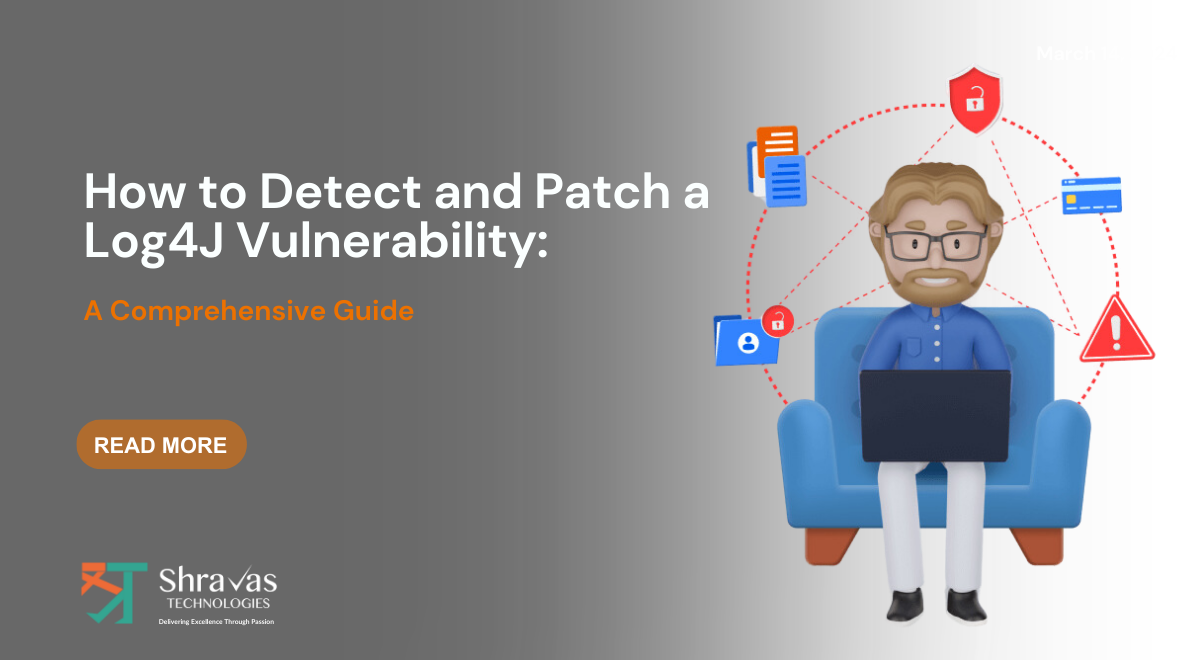March 14, 2024 By Priti Jesani No comments yet
Introduction
In 2024, data is the new gold, safeguarding information from vulnerabilities is paramount. As cyber threats evolve, so must our defenses. Recently, the Log4J vulnerability sent shockwaves through the tech community, highlighting the critical need for robust security measures. In this guide, we delve into the depths of Log4J vulnerability detection and patching, ensuring your systems remain resilient against potential breaches.
Understanding the Log4J Vulnerability
Unveiling the Log4J Vulnerability
The Log4J vulnerability, also known as CVE-2021-44228, exposed millions of systems worldwide to potential exploitation. This flaw allowed threat actors to execute arbitrary code remotely, posing significant risks to data integrity and system security.
Impact of the Log4J Vulnerability
The ramifications of the Log4J vulnerability extended across industries, from finance to healthcare and beyond. With sensitive information at stake, the urgency to address this vulnerability became paramount.
Detecting the Log4J Vulnerability
Vulnerability Assessment and Penetration Testing (VAPT)
Engaging the services of the best testing company in Bangalore can be instrumental in detecting Log4J vulnerabilities. Through comprehensive vulnerability assessment and penetration testing (VAPT), experts can identify weaknesses in your system’s defenses, including potential Log4J exploits.
Automated Scanning Tools
Utilizing automated scanning tools can streamline the detection process, flagging Log4J vulnerabilities and providing insights into patching solutions. However, human oversight remains crucial to ensure thorough analysis and interpretation of results.
Manual Code Review
A meticulous manual code review conducted by seasoned testers in Bangalore can unearth subtle vulnerabilities that automated tools might overlook. By scrutinizing the codebase for Log4J dependencies and outdated libraries, testers can mitigate risks proactively.
Patching the Log4J Vulnerability
Update Log4J to the Latest Version
The first step in patching the Log4J vulnerability is to update the Log4J library to the latest secure version. This ensures that known vulnerabilities are addressed, mitigating the risk of exploitation.
Dependency Management
Reviewing and managing dependencies within your software stack is imperative to safeguard against Log4J vulnerabilities. By identifying and updating outdated dependencies, you eliminate potential entry points for malicious actors.
Implementing Firewall Rules
Configuring firewall rules to restrict access to vulnerable components can provide an additional layer of defense against Log4J exploits. By limiting external exposure, you minimize the likelihood of unauthorized access to sensitive systems.
Concluding Words
In the ever-evolving landscape of cybersecurity, vigilance is key. Detecting and patching vulnerabilities such as Log4J requires a multifaceted approach, encompassing rigorous testing, proactive mitigation strategies, and timely updates. By partnering with the best testing company in Bangalore and adhering to industry best practices, you can fortify your defenses against emerging threats, ensuring the integrity and security of your systems and data.
Key Takeaways
- The Log4J vulnerability poses significant risks to system security and data integrity.
- Detecting Log4J vulnerabilities requires a combination of automated scanning tools, manual code reviews, and penetration testing.
- Patching the Log4J vulnerability involves updating the Log4J library, managing dependencies, and implementing firewall rules.
- Partnering with experienced testers in Bangalore and adopting proactive security measures is essential to safeguarding against Log4J exploits.


Leave A Comment